Yesterday One More Production and director Patrick Jean made what the kids call “a Hullaballoo on the internet” with the very cool animation and vfx packed film PIXELS. If you haven’t seen it yet, watch it below. I know the workflow that was used by One More Production on the film PIXELS, I thought about how that technique could be done in Maya, then I can across this freakishly cool pairing of applications called QUBICLE from Tim Wesoly a 33 years old half designer, half nerd living in Hannover, Germany. Qubicle is a tool for creating 3D Pixel art
just like the style used the film PIXELS. It consists of two parts, Qubicle Constructor for creating the 3D pixel art, and Qubicle plug in for Maya where the pixel matrices can be animated normally or by means of a pixel rasterizer for mesh to cubes translations. Check out the examples below.
“At first you draw a front view of your model. The needed tools, like a pencil and an eraser, are familiar to users of common image editing tools like Adobe Photoshop. The main difference between Photoshop and Qubicle is the fact that pixels are rendered as cubes. So the front view of your model isn’t a plain 2D layer but a 3D slice. Starting from the front view you extend your model to multiple slices and finally get a 3D pixel-art model. Instead of pushing thousends of vertices – like you would have to do with common concepts of 3D modeling – you draw your model just in the way you draw pixel-art in 2D. It’s easier to learn and use than creating polygonal meshes.
Furthermore the complex task of texturing is redundant, because with Qubicle the texture IS the model.”
“Of course you can animate 3D pixel-art created with Qubicle by using complex concepts like rigging, but there’s also a simpler method implemented in Qubicle: the concept of animating using sequences.”
“To create the optimized mesh, the needed parts are combined to a single object. Afterwards, invisible faces are deleted to save render time and increase the overall performance. These optimized meshes can be used and manipulated as any other mesh generated with Maya. With the second display mode as particle system, the single parts are preserved. In this mode you can apply fields like gravity and distort the model. Or you can edit the original parts and create an animation based on the change-process. Both modes are parented under a control unit. As long as neither mode is edited, they are both coextensive and you can switch between them without recognizable change. So, like in the video, the walk-cycle is at first displayed as mesh, because meshes are easier to handle, and then in the frame the shoulder is hit, the display-mode is switched to particle system. Now a field can be applied to destroy the shoulder.”
The Rasterizer is a tool that comes with the Qubicle Maya Plugin. It’s purpose is to convert any mesh to 3D pixel-art as the example below shows.
The Bad Sushi Incident from Tim Wesoly on Vimeo.
This video was part of my 2009 multimedia diploma presentation. The purpose was to test a feature of the Qubicle Plugin i’ve written for Maya. This feature is called Rasterizer and translates animated meshes into cubes – or 3d pixel-art.
For more information on Qubicle, check out the guided tour at its home on Minddesk.


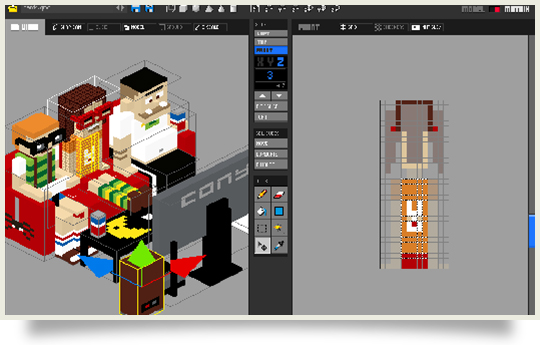

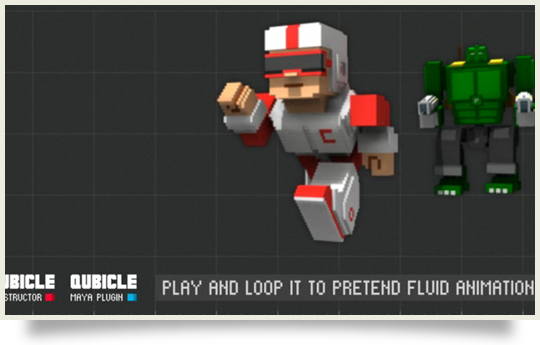
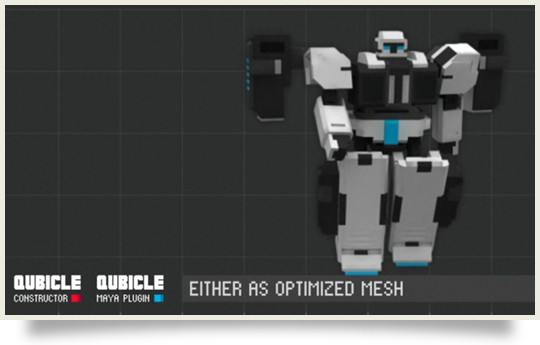
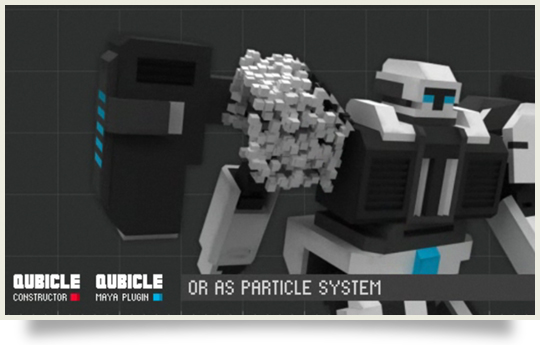

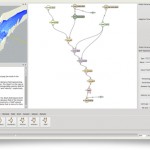
Matthew
Hey Lester,
Just wondering where you got the maya plugin, I’ve done a thorough search and I can’t come up with anything. I’m running the basic edition so it’s possible I haven’t got the Qubicle Maya Plugin for that reason but I couldn’t see anything mentioned in the documentation, unless the plugin is part of the obj exporter?
Thanks in advance,
Matt
p.s – this is my first visit to your site, looks fantastic (content wise) thanks so much for such a wonderful resource.
lesterbanks
As far as i know, Rasterizer is a feature of Qubicle, however you may want to check with Mindesk.
Matthew
Thanks Banks! Basic edition doesn’t seem to have that feature. I’ll try and find myself the ‘Qubicle Maya Plugin’ and hopefully that will answer my questions.
Thanks again.
Matt